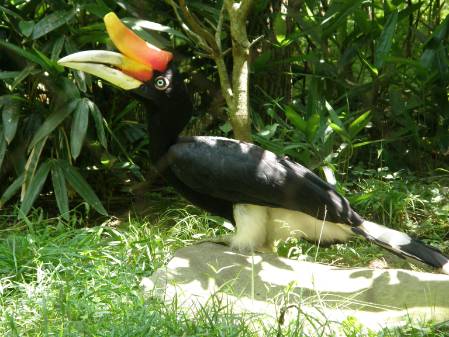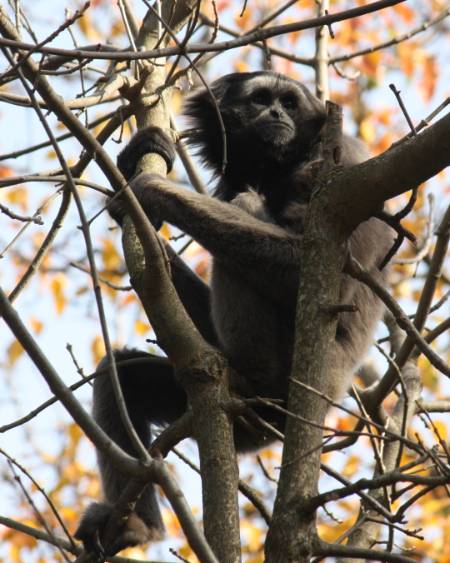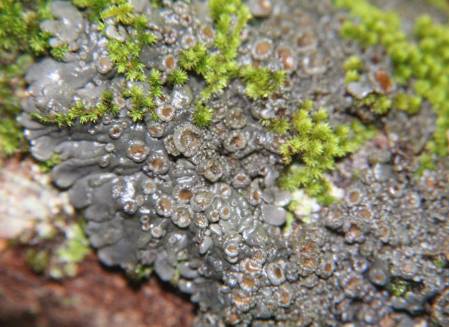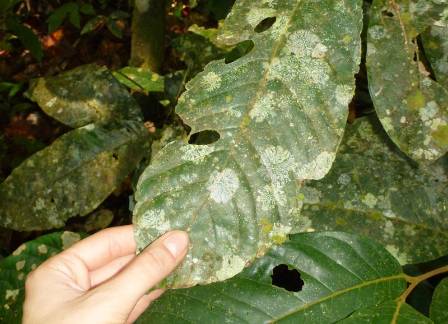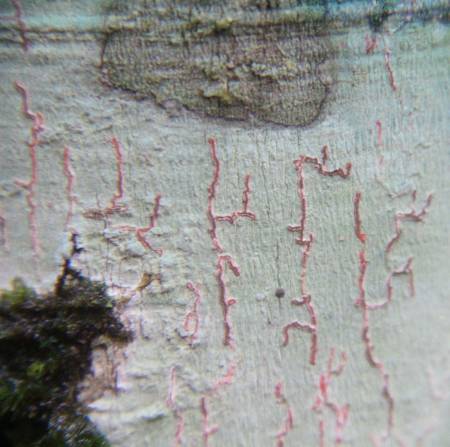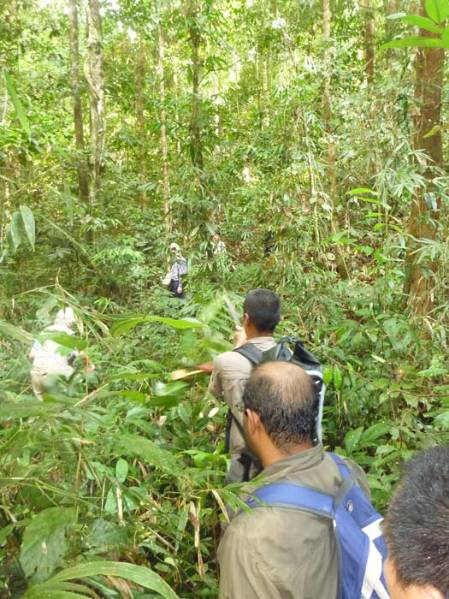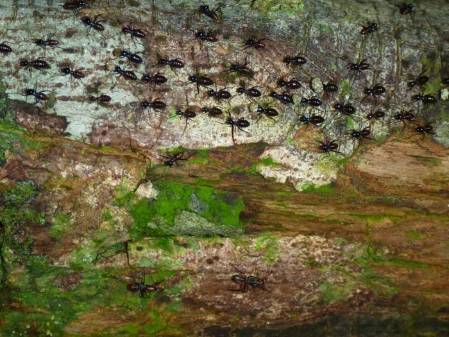An early start today. Tony, Kerry, Dan and I wanted to stake out the Strangling Fig tree near our accommodation, in the hope of seeing gibbons feeding on the fruit. We arrived at 5.30am, just as it was beginning to get light, and sat patiently watching the tree.
It was fascinating to watch as different groups of animals took it in turn to gather and feed from the tree. First it was the hornbills, various different species including the Rhinoceros Hornbill (a MASSIVE bird with a bright red and yellow bill and a horn shaped ‘casque’) and the Asian Black Hornbill (where the bill of the male is white in contrast to the bill of the female which is black).
A Rhinoceros Hornbill in captivity. Photo by Jim Bowen.
Dozens of Hornbills filled the branches of the tree, with Dan counting 56 or more. But two by two (Hornbills pair for life and are rarely seen on their own) they gradually left, with a sudden final exodus marking the arrival of the next group of animals, the Macaques. We saw both Pig-Tailed Macaques and Long-Tailed Macaques in the tree today, deftly clambering and jumping from branch to branch.
Once the Macaques had gone, the tree remained fairly quiet and we decided to have our own breakfast. But when Tony and I returned half an hour later, we spotted a small, round, hairy rump protruding from amongst a clump of leaves. As the animal moved and gracefully swung between the branches, we realised it was a Bornean Gibbon, the final morning feeder at the tree.
The Bornean Gibbon (also known as Mueller’s Gibbon) is endemic to Borneo. Photo by Ltshears.
We’ve seen gibbons a couple of times over the past few days, but only ever from a distance and always fleetingly as they disappear off into the dense vegetation of the forest. This one was unusual because it appeared to be on it’s own (Bornean Gibbons are more commonly seen in pairs or family groups).
Our Gibbon sighting today, coupled with the soulful morning call of local Bornean Gibbons (which they make to mark their territory).
While looking for large animals in the rainforest can be time consuming and frequently unsuccessful, looking for lichens is easy – they’re everywhere! The trees are often covered in them, on their bark and on their leaves.
Lichens of the Physma genus, seen up close, with brown fruiting bodies that produce spores. Photo taken by Kishneth Palaniveloo, one of our local collaborators at the University of Malaysia, Sabah.
Holger compares temperate and tropical forests, and the differences he has seen in the lichens that can be found there.
The majority of the trees in the Lowland Dipterocarp Rainforests of Borneo are evergreen. This means that instead of dropping their leaves in the Autumn (as many British species do) they retain them for several years. This gives lichens time to colonise the leaves, with some species specialising in growing on this surface (rather than tree bark).
Various species of lichens have colonised this leaf.
In the UK, Pat uses the lichens growing on twigs as indicators of short-term environmental changes. Similarly, lichens growing on leaves in the tropics can be used to study short-term patterns and changes in the atmosphere, as opposed to the lichens growing on tree trunks, which have been there longer and reflect a greater period in time.
These brightly coloured ‘Script’ lichens, so called because of the patterning of the fruiting bodies, are reminiscent of raspberry ripple ice-cream! Photo taken by Kishneth.
Today was the last day in the field for Dan, Kerry and Keiron (although Pat and Holger will continue to collect lichens for a while longer). Tomorrow they must pack up their samples in the Studies Centre laboratory and organise all their kit, ready for the journey back to Kota Kinabalu (where we will be based for the final couple of days of our trip). Working in the laboratory is a far cry from the heat and humidity of the rainforest, and is far easier to move around in! With heavy rainfall daily, the paths and trails in the forest quickly become muddy and slippery.
Good balance and plenty of stamina are needed for trekking in the jungle.
A Parang (a large Bornean knife) is vital for cutting through thick undergrowth in the rainforest.
Walking in thick mud can be tricky at the best times, but combined with thick undergrowth, exposed tree roots and steep ridges, going for a walk in the rainforest is not for the faint-hearted. But it’s worth the effort, you never know what you might stumble across….
Dan makes an interesting discovery in the forest.
A torrent of worker termites (of the Hospitalitermes genus) march along a fallen branch. At the edges, the soldier termites stand guard, protecting the colony from marauding ants (seen at the edge of the photo).



